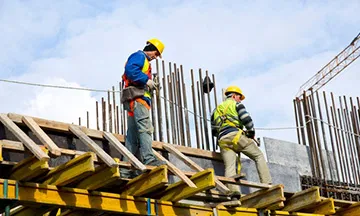Construction safety training is crucial for fostering a proactive and accident-free environment on job sites, serving as the foundation for minimizing hazards and ensuring worker well-being. At its core, this training equips workers and supervisors with essential knowledge and skills to recognize, evaluate, and mitigate risks before they escalate into serious incidents. Comprehensive safety programs cover a range of topics, from proper use of personal protective equipment PPE to understanding emergency procedures, and adherence to safety protocols. By instilling these practices, construction safety training helps create a culture of safety that permeates every level of an organization. One of the most significant benefits of safety training is its role in preventing accidents before they happen. When workers are well-versed in the potential dangers of their environment and how to handle them, the likelihood of mishaps decreases. For example, training on scaffolding safety ensures that workers are aware of the correct procedures for erecting and using scaffolding, reducing the risk of falls. Similarly, education on electrical safety helps prevent incidents related to live wires or faulty equipment. By addressing these potential hazards proactively, safety training minimizes the chances of accidents, injuries, and fatalities.

Moreover, a proactive approach to safety through training promotes compliance with legal and regulatory requirements. Construction sites are governed by strict safety regulations set by organizations such as OSHA Occupational Safety and Health Administration in the U.S., and adherence to these rules is not optional. Regular safety training ensures that all employees understand and follow these regulations, avoiding costly fines and legal issues. It also helps organizations stay current with any changes in safety standards or best practices, further enhancing their ability to prevent accidents. The impact of safety training extends beyond immediate accident prevention; it also fosters a positive safety culture that benefits overall productivity and morale. Workers who feel safe and supported are more likely to be engaged and productive, knowing that their well-being is a priority for their employer. A culture of safety encourages open communication about potential hazards and unsafe practices, which can lead to continuous improvements in safety protocols. Additionally, when employees are confident in their safety training, they are more likely to take personal responsibility for their own safety and that of their colleagues.
Investment in safety training also has financial implications. While the initial costs of training programs may seem significant, the long-term savings are substantial. Fewer accidents mean lower medical expenses, reduced insurance premiums, and decreased downtime due to injuries. By preventing accidents, companies avoid the indirect costs associated with workplace injuries, such as lost productivity and diminished employee morale click here. Therefore, the return on investment for comprehensive safety training is often substantial, making it a wise financial decision as well as a moral obligation. In summary, construction safety training is essential for creating a proactive, accident-free environment. By equipping workers with the knowledge and skills to manage risks, ensuring compliance with regulations, fostering a positive safety culture, and providing significant financial benefits, safety training is a cornerstone of effective construction site management. Its importance cannot be overstated, as it directly contributes to the health, safety, and efficiency of construction operations.